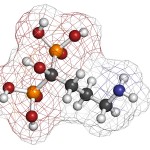
Bisphosphonates are prescribed for a wide range of bone diseases (Paget’s disease of bone, hypercalcaemia of malignancy, osteolytic bone metastases, and osteolytic lesions of multiple myeloma). Bisphosphonate-related osteonecrosis of the jaw (BRONJ) was first reported in 2003 and has been characterised as the main side effect of bisphosphonate therapy (BP). The clinical manifestations of BRONJ vary from small asymptomatic areas of necrotic bone and simple swellings and abscesses to complex cases with fistulas and diffuse pain. The management of BRONJ has centered on efforts to eliminate or reduce the severity of symptoms, to slow or prevent the progression of disease, and to eradicate diseased bone.
The main aim of this review was to determine the treatment strategies available for BRONJ, describing the out- come variables measured for each treatment modality and the success of the treatment expressed by the outcome.
Methods
Searches were conducted in the PubMed, the Cochrane Library, and Web of Science databases. English language studies (cross-sectional surveys, cohort, and case–control studies, clinical trials, case series, and retrospective studies) with diagnosis of BRONJ confirmed in accordance with the AAOMS or American Society of Bone and Mineral Research (ASBMR) definitions were considered. Treatment outcomes and variable needed to be mentioned in the studies.
Results
- 97 papers describing 4879 cases of BRONJ were included.
- 79 (81.4%) were considered to be good, 16 (16.5%) moderate and 2 poor (2.1%).
- 35 papers were case series, 3 clinical trials, 18 prospective and 37 retrospective studies and 4 clinical reports.
- 3010 cases were females (67.2%) and 1471 males (32.8%)
- The commonest site of was the mandible (3011 patients; 65.1%), followed by the maxilla (1320 patients; 28.5%) or both jaws (296 patients; 6.4%)
- Duration of BP ranged fr0m 1-72.2 months (mean 38.2 ± 15.7mths)
- Tooth extraction was considered to be the main trigger factor
- A wide range of treatment approaches were reported(see table).
- 7 outcome variables were used in the studies;
- Mucosal healing (47 papers; 48.5%),
- Bone exposure (30 papers; 30.9%),
- Pain (31 papers; 31.9%),
- Changes in signs and symptoms (28 papers; 28.9%),
- Improvement in stage (14 papers 14.4%),
- Reduction in lesion size and number (12 papers; 12.4%),
- Infection control (seven papers; 7.2%).
- The number of patients complete healing, defined as complete regrowth of the oral mucosa over previously exposed bone for the various approaches is shown in table below.
| Number of patients (%) | Complete healing No. (%) | |
| Medical and minimally invasive surgery | 715 (20.6) | 278 (38.9) |
| Medical, minimally invasive and major surgery | 422 (12.1) | 169 (40.0) |
| Medical treatment | 286 (8.2) | 129 (45.1) |
| Minimally invasive surgery | 767 (22.1) | 301 (39.2) |
| Major surgery | 252 (7.3) | 207 (82.1) |
| Guided debridement | 25 (0.7) | 12 (48) |
| Laser therapy | 322 (9.3) | 146 (45.3) |
| Growth factors | 92 (2.6) | 75 (81.5) |
| Ozone therapy | 161 (4.6) | 93 (57.8) |
| Discontinuation of bisphosphonates | 361 (10.4) | 127 (35.2) |
| Hyperbaric oxygen | 45 (1.3) | 12 (26.7) |
| Teriparatide | 27 (0.8) | 22 (81.5) |
| Total | 3475 | 1571 (45.2) |
Conclusions
The authors concluded:
Minimally invasive surgical treatment was the treatment most used. Medical treatment was also used. Adjunctive treatments included laser, growth factors, hyperbaric oxygen and ozone. The articles provided a broad range of outcome variables to assess the treatment of BRONJ and the outcomes of each treatment. Considerable heterogeneity was found regarding study design, sample size, and treatment modalities. Clinical trials with larger samples are required to provide sufficient information for each treatment modality to predict the outcomes of each treatment.
Comments
Three databases were used to search for studies relevant to this topic although only those published in English were included so additional relevant studies may have been missed. A wide range of study designs has been considered. Because of heterogeneity was regarding study design, sample size, and treatment modalities a narrative summary of the various treatment was presented. As the authors note the management of BRONJ remains controversial and comparisons between treatments are complicated by the number of different BPs and other comorbidities. In addition, the definition regarding successful treatment outcomes has also not been universally defined. While non-surgical conservative, and minimally invasive treatment regimens for BRONJ are considered useful to control the disease; the approach to the use of adjunctive treatments is more opinion than evidence-based at present. Therefore well-conducted clinical trials are needed to evaluate treatments for BRONJ.
Links
Fliefel R, Tröltzsch M, Kühnisch J, Ehrenfeld M, Otto S. Treatment strategies and outcomes of bisphosphonate-related osteonecrosis of the jaw (BRONJ) with characterization of patients: a systematic review. Int J Oral Maxillofac Surg. 2015 May; 44(5):568-585. doi: 10.1016/j.ijom.2015.01.026. Epub 2015 Feb 26. Review. PubMed PMID: 25726090.
Dental Elf – 6th Feb 2012- Bisphosphonate osteonecrosis (BON)

Bisphosphonate osteonecrosis -minimally invasive surgical treatment most used treatment- http://t.co/QHk7ufGLBY
Little evidence for use of adjunctive treatments for bisphosphonate osteonecrosis-http://t.co/QHk7ufGLBY
Wide range of treatment approaches used for bisphosphonate osteonecrosis – http://t.co/QHk7ufGLBY
Don’t miss- bisphosphonate-related osteonecrosis of the jaw treatments – http://t.co/QHk7ufGLBY
Bisphosphonate-related osteonecrosis of the jaw treatments https://t.co/mcuwBfrvzD @sharethisさんから
[…] Dental Elf -4th May 2015- Bisphosphonate-related osteonecrosis of the jaw treatments […]